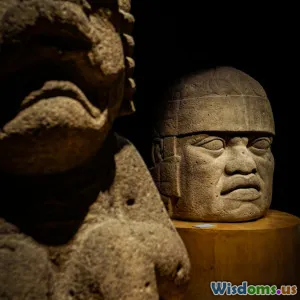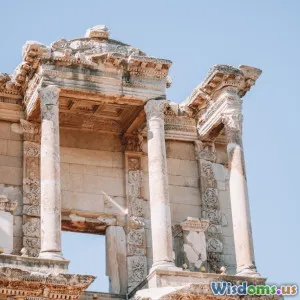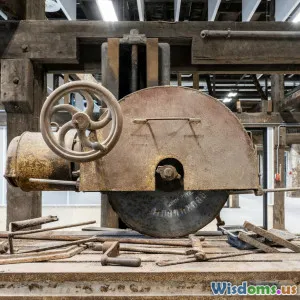
Cultural Interactions in Ancient Times
7 min read Explore the vibrant cultural exchanges in ancient times that shaped history through trade, conquest, and shared knowledge. (0 Reviews)
Cultural Interactions in Ancient Times: Bridges of Civilization
Cultural interactions have profoundly shaped human history, creating dynamic societies from the very beginnings of civilization. Contrary to the common assumption that ancient people lived isolated lives in self-contained regions, evidence reveals that vibrant exchanges of ideas, goods, and customs occurred across continents. This article explores those formative connections, illuminating how ancient cultural interactions sparked innovation, progress, and enriched civilizations.
Introduction: The Web of Ancient Connections
Imagine standing in the marketplace of ancient Babylon around 2000 BCE. Traders from far-off lands bring exotic spices, textiles, and precious metals. Languages and customs intermingle in an exotic symphony of diversity. This scene reflects a fundamental truth: ancient peoples were surprisingly interconnected, and their encounters form the foundation of our shared human story.
The question arises: how did these cultural interactions manifest, and what impact did they have? Ancient interactions were driven by trade, conquest, migration, and diplomatic contact. They led to diffusion of technologies, beliefs, artistic styles, and social organization.
1. Trade Routes: The Arteries of Cultural Exchange
Trade routes were not mere paths for goods; they were conduits for culture. The Silk Road, established around the 2nd century BCE, epitomizes this phenomenon. Stretching over 6,000 kilometers, it connected East Asia with the Mediterranean, facilitating the exchange of silk, horses, glassware, and, crucially, ideas.
For instance, Buddhist philosophy traveled from India to China along this route, transforming religious landscapes. Likewise, papermaking techniques flowed westward from China, profoundly influencing literacy and bureaucracy in the Mediterranean and beyond.
Similarly, the Incense Route connecting Arabia, Somalia, and the Mediterranean facilitated trade in frankincense and myrrh, while diffusing artistic motifs and cultural practices.
2. Conquest and Cultural Fusion
Military conquest often accelerated cultural interaction and fusion. The campaigns of Alexander the Great (4th century BCE) offer an illuminating case. Alexander conquered Persian, Egyptian, and parts of Indian territories, leading to the Hellenistic Age—a period marked by Greek and local cultures blending in art, governance, and science.
The city of Alexandria in Egypt became a melting pot where Greek, Egyptian, Jewish, and other cultures converged, fostering significant advances in astronomy, medicine, and philosophy.
In Mesoamerica, the Aztec Empire absorbed diverse groups through conquest, incorporating and blending religious practices and artistic traditions, demonstrating how cultural integration occurred not just via peaceful exchange but also imperial expansion.
3. Migration and Diaspora Communities
Ancient migrations also played a vital role. The Phoenicians, renowned seafarers from the Levant, established colonies across the Mediterranean, including the influential city of Carthage in North Africa. These colonies were not mere extensions of the homeland but centers of cultural synthesis, blending native customs with Phoenician language, religion, and trade networks.
The Jewish Diaspora, following expulsions and exiles, resulted in communities settling across the Near East and Mediterranean, where they preserved identity while engaging with local cultures. This interaction enriched religious thought and intellectual traditions.
4. Knowledge Exchange and Intellectual Borrowing
Intellectual interplay across ancient cultures accelerated scientific and philosophical progress. Take the ancient Library of Alexandria, where scholars from various backgrounds—Egyptian, Greek, Jewish, and Babylonian—collaborated, translating and sharing works.
The transmission of astronomical knowledge, mathematics, and medical practices among Babylonians, Greeks, Indians, and Arabs illustrates this cross-pollination. For example, the Greek concept of the atom found resonance and adaptation in Indian philosophy, while Greek medical traditions merged with Egyptian and Persian practices.
Additionally, cartography evolved through intercultural efforts, with explorers and geographers refining knowledge of the world’s geography through accumulated reports shared along trade routes.
5. Artistic and Religious Influences
Cultural interactions fostered new artistic styles and religious syntheses. The Gandhara region (modern Afghanistan and Pakistan) is renowned for its Greco-Buddhist art, blending Hellenistic techniques with Buddhist iconography.
Roman religious practices borrowed from Etruscans and Greeks, adapting gods and rituals, illustrating how religions and myths evolved via contact.
Similarly, motifs such as the lotus flower traveled from Egyptian artistry into Buddhist symbolism, a testament to intertwined spiritual landscapes.
Conclusion: Lessons from Ancient Cultural Interactions
The ancient world’s cultural interactions reveal a mosaic of human engagement marked by curiosity, adaptation, and synthesis. These exchanges forged pathways for technological innovation, enriched spiritual traditions, and laid foundations for modern civilizations.
Today, as globalization intensifies, the ancient experience reminds us that cultural diversity and interaction have always been engines of progress and understanding. Embracing this heritage encourages us to foster open dialogue, learning, and respect across cultures.
As the historian Arnold Toynbee once said, “Civilization is a river; culture is a channel inside it.” The flow of ancient cultural interaction continually carved the river’s course, shaping human destiny across ages.
References:
- Liu, Xinru. The Silk Road in World History. Oxford University Press, 2010.
- Boardman, John. The Greeks Overseas. Thames & Hudson, 1999.
- Kuhrt, Amélie. The Ancient Near East: c. 3000–330 BC. Routledge, 1995.
- Whitfield, Susan. Life Along the Silk Road. University of California Press, 1999.
Rate the Post
User Reviews
Popular Posts



















